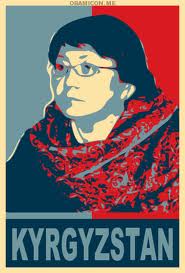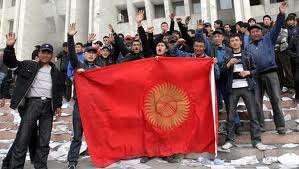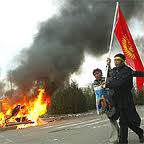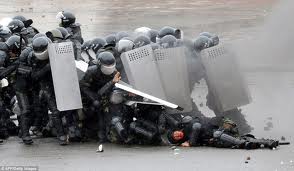
One REI staff family’s experience of a local revolution.
“11:45PM: Wake from a light sleep. Dogs are barking. Check the street. A car is stopped 200 meters up the road. Watch as it drives away. The two pedestrians who were there half an hour ago are gone. No glow of flames from the fields across the street or the village across the fields. No sound of crowds. Back to bed. 1:30AM: Wake up and check the roads again. 3:00AM: Wake again. It would be a beautiful spring night if not for the adrenaline.
“About a month before, I’d written a letter to send to friends and family at home to tell them about our work in Kyrgyzstan. The new English curriculum and books were on schedule to be completed and printed for the local language school that we run, and we were six months ahead of schedule on our other business goals.
Then the revolution came and changed everything…”

So begins a letter written by REI staff member Randall Gwin, who with his wife Rory and their three children, live and work in Kyrgyzstan. Since arriving in 2007, Randall has run a local language center that he created which offers English, Russian, Chinese, and Kyrgyz language classes, as well as an English Teacher Certification Program. Rory, who is a trained Family Practice physician, volunteers at two different medical clinics in the area and mentors young local doctors to help them improve their care of their patients.

They have lived in a peaceful Kyrgyzstan for nearly three years, and then on April 7 of this year, President Kurmanbek Bakiyev was ousted in a political uprising and replaced by a new government. Demonstrations on government buildings soon turned violent, and looting of homes and illegal seizure of land was rampant. The political violence sparked more ethnic violence between groups in southern Kyrgyzstan. Hundreds of Kyrgyz were killed.
The Gwins live in the capital city of Bishkek, where the violence began, and they have close friends from ethnic groups on both sides of the fighting: they were placed in the middle of it all in many respects.

They describe the revolution from their eyes:
“There were rioting crowds, snipers on roofs, burning and looting, anarchy and vigilantes, a hundred people killed, buildings smoking and burned to the ground, lands seized, a president fleeing, and ethnic minorities targeted.
…Small talk with neighbors included questions like, ‘Are you able to send the kids to school today?’ I revised our beginning language curriculum to include the words ‘looting,’ ‘curfew,’ and ‘evacuate.’”
But in the midst of the revolution, the Gwins weren’t afraid.
They say, “We weren’t in imminent danger. There were no attacks against Americans. And in fact, revolution isn’t historically unique, or by historical standards, very dangerous. Families have grown through much worse.”
Instead of panicking, the Gwins choose to live their lives with peace, believing that all is well and that they have been called to Kyrgyzstan for a purpose: to love their neighbors, on both sides of the conflict, both politically and ethnically.
So what do they choose to do, as they still live in an unstable country?
“We go to work. We buy food. We talk with neighbors. We sleep. We pack the evacuation suitcase and make sure the gas tank’s full. We stock up on water. We pray. We study the language. We recruit students to our school. We plan our country exit strategy. We check the news. We wait for electricity. We make pancakes.”
- – - – -


 Keep up with REI's work overseas by reading our blog! Subscribe by email or by feed.
Keep up with REI's work overseas by reading our blog! Subscribe by email or by feed.